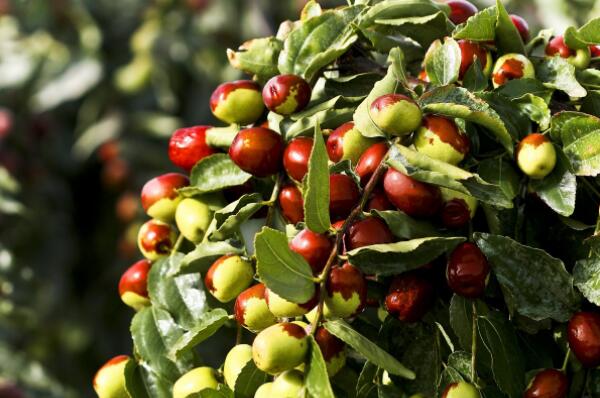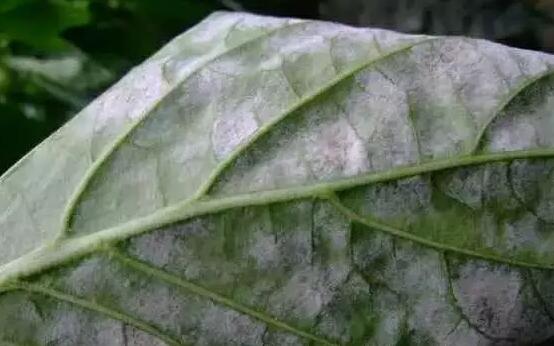Common crop corn, tomato, cotton bollworm appear what medicine to hit? How?
Corn, tomato and cotton are all common crops, and they are also prone to diseases in their growth process, resulting in crop yield reduction and even death. So what kind of medicine should you take if the cotton bollworm appears? How to treat it?

What is a cotton bollworm? How to identify it?
1. Helicoverpa armigera belongs to Lepidoptera and Noctuidae. It harms many crops, not only cotton, but also corn, tomato, flax, sunflower, pea, pepper and other crops as well as a variety of weeds. There are many aliases for cotton bollworm, but it is called corn ear worm when it is harmful to corn. In recent years, in some areas of cultivation reform and the expansion of multiple cropping area, the damage to corn caused by cotton bollworm tends to be aggravated, especially in southern Liaoning, the Yangtze River Basin and some areas.
2. Adult: grayish brown medium-sized moth, body length 15~20mm, wingspan 31~40mm, compound eye spherical, green (related species tobacco green compound eye black). The female moth is reddish brown to grayish brown, the male moth is bluish gray, and the front and rear wings of cotton bollworm can be used as the model of adults of the family Noctuidae. Its forewings have dark gray broadband outside the lateral line, with seven small white spots, kidney lines and dark brown rings. The hind wings are gray and white, there is a dark brown broadband along the outer edge, and there are two connected white spots in the center of the broadband. There is a crescent-shaped brown spot on the anterior edge of the posterior wing.
Egg: hemispherical, 0.52 mm high, 0.46 mm high, slightly raised at the top; the surface is covered with vertical and horizontal lines, there are 12 longitudinal lines from the top, and the middle 2 longitudinal lines are sandwiched with 1-2 short lines and more than 2-3 bifurcations, so there are 26-29 longitudinal lines from the middle.
Larvae: a total of 6th instar, sometimes 5th instar (feeding on pea seedlings, sunflower disk), mature 6th instar worm about 40~50mm, head yellowish brown with inconspicuous markings, larval body color changeable, divided into four types: 1) body color light red, topline, subtopline brown, valve line white, hair black. 2) the body color is yellow and white, the topline and subtopline are light green, the valve line is white, and the hair process is the same as the body color. 3) the body color is light green, the topline and subtopline are not obvious, the valve line is white, and the hair process is the same as the body color. 4) the body color is dark green, the topline and subtopline are not obvious, and the valve is light yellow. There is a brown longitudinal band above the valve, which is arranged by sharp spines (the spines of tobacco worms are obtusely round and do not line up). There are two hair processes in each of the 1st and 2nd 5th segments of the abdomen of the larvae.
Pupae: long 17~20mm, fusiform, reddish brown to dark brown, with a pair of buttocks at the end of the abdomen, separated at the base of the thorns. The valve is larger, the periforamen is barrel-shaped and high, and the engraving of the 5th-7th nodes of the abdomen is semicircular, thicker and sparse (the stomata of the tobacco green worm is small, the base of the thorn is closed, the peri-foramen is not high, and the engraving of the 5th-7th nodes is fine, semicircular and round). 5~15cm pupated in the soil and covered with soil cocoon.
Corn, tomato, cotton bollworm appear to play what medicine? How to treat it?
Corn:
1. Physical control
Poplar twig trap moth: the moth generation period of adults should be carried out in a large area, especially in cotton fields, which can eliminate a large number of adults and play an important role in reducing the source of local insects.
High pressure mercury lamp and frequency vibrating insecticidal lamp have the characteristics of trapping and killing a large number of cotton bollworm and little killing to natural enemies, so it is suitable to be used in cotton bollworm reoccurrence area and Eclosion peak period.
2. Biological control
Release Trichogramma: during the peak spawning period of cotton bollworm, 300000 bees were released twice per hectare, and 60 release sites were set up (20 000 bees per mu and 4 release sites). The Trichogramma that can be feathered the next day was loaded into an open paper bag and hung in the middle and lower part of the plant.
3. Chemical control
Before the third instar, chemical pesticides such as 2.5% cyhalothrin EC 2000 times and 5% high-efficiency cypermethrin EC 1500 times were sprayed. In late June, the insecticidal granules were applied in the heart and leaves of corn, and the insecticide and application method were the same as those of corn borer.
4. Agricultural prevention and control
Autumn ploughing and winter irrigation depress the population number of overwintering insects. Optimize the crop layout to avoid the migration and reproduction of neighboring cotton bollworm in the edge of the cotton field, canal ridge planting corn trapping zone, select early-maturing corn varieties, about 2200 plants per 667m2. Making use of the habit that adults of cotton bollworm like to perch and lay eggs in the trumpet mouth of corn, special people beat heart leaves every morning to eliminate adults and reduce the source of insects.
Tomatoes:
Ploughing the land and watering the flooded land before winter to reduce the source of overwintering insects. According to the forecast of insect situation, in the peak spawning period of cotton bollworm, combined with pruning, the eggs were removed and burned.
Medication should be started when the number of eggs per 100 plants reaches 20 Mel 30. If the number of larvae per 100 plants exceeds 5, the drug should continue to be used. Drugs are usually used when the fruit begins to expand.
Cotton:
1. Bifenthrin EC 3000-5000 times
2. Methylaminoavermectin benzoate microemulsion 7500-15000 times
3. 52.25% Chlorochlorpyrifos EC 1500-2000 times
4. 28% cyanophoxim EC 1000-1500 times
5. 48% Chlorpyrifos EC 500-800 times
6. 2.5% cyhalothrin EC 1500-2000 times
7.40% chlorpyrifos EC 1000-1200 times.
Pesticide spraying sites of cotton bollworm
When the cotton bollworm lays eggs, it usually produces on the top of the cotton plant, on the top of the fruit branch, on the bud stalk and on the bract. When spraying, emphasis should be placed on the top of the cotton plant and on the tender tips, bud stalks and bracts of the fruit branches.
Pesticide spraying time:
The hatching rule of Helicoverpa armigera is egg color white, two days yellow, three days black, four days hatching. The growth point was harmed on the second day after hatching, and the young buds were harmed on the fourth day. Most of the cotton bollworm feeds from 8 am to 11:00 and after 4 pm, but seldom during the high temperature period at noon. During the appropriate period of control, from the peak of laying and hatching to the blackening of most of the eggs or before the hatching was not migrated, it was better to apply the pesticide at 8: 11 a.m. and 4 p.m. Do not apply pesticide at high temperature, but it is easy to volatilize and decompose at high temperature, not only the operator is easy to be poisoned, but also the efficacy is poor.
Alternate use of pesticides:
Do not use one pesticide continuously to prevent Helicoverpa armigera from developing resistance to the drug.
Pesticide concentration:
The concentration of pesticides prepared according to the instructions can not be arbitrarily increased or decreased. Increasing the concentration is easy to cause drug damage to cotton plants, while decreasing the concentration will reduce the efficacy.
Dosage of pesticide solution:
If the dosage of the solution is small and the cotton plant is sprayed unevenly, the pest control effect is poor. When controlling the second generation cotton bollworm, the amount of liquid used per mu should not be less than 40 kg, and when controlling the third and fourth generation cotton bollworm, the amount of liquid used should be 80 kg / mu and 100 kg / mu. The effect is good if the medicine is applied evenly in all parts of the cotton plant.
Time: 2019-04-10 Click:
- Prev

Where is the suitable place for planting jujube trees? When will it be planted? What kind of medicine do you take when you have a worm?
Jujube is a small deciduous tree, sparse shrub, up to more than 10 meters high; brown or grayish brown bark; flowering from May to July and fruiting from August to September. So where is it suitable for planting? When will it be planted? What kind of medicine do you take when you have a worm? Where is the jujube suitable for planting? Warm temperate positive species of jujube. Xi Guang
- Next

Flower, fruit, wheat each kind of crop occurrence powdery mildew what medicine is better? What are the symptoms?
Powdery mildew is one of the main diseases of vegetables in summer. The disease is easy to occur in summer because of high temperature, stuffy humidity, improper fertilization, overgrowth of plants, poor ventilation and so on. What kind of medicine is better for powdery mildew? What are the symptoms? Powdery mildew often occurs in the later stage of plant growth, which mainly harms leaves.
Related
- Fuxing push coffee new agricultural production and marketing class: lack of small-scale processing plants
- Jujube rice field leisure farm deep ploughing Yilan for five years to create a space for organic food and play
- Nongyu Farm-A trial of organic papaya for brave women with advanced technology
- Four points for attention in the prevention and control of diseases and insect pests of edible fungi
- How to add nutrient solution to Edible Fungi
- Is there any good way to control edible fungus mites?
- Open Inoculation Technology of Edible Fungi
- Is there any clever way to use fertilizer for edible fungus in winter?
- What agents are used to kill the pathogens of edible fungi in the mushroom shed?
- Rapid drying of Edible Fungi

